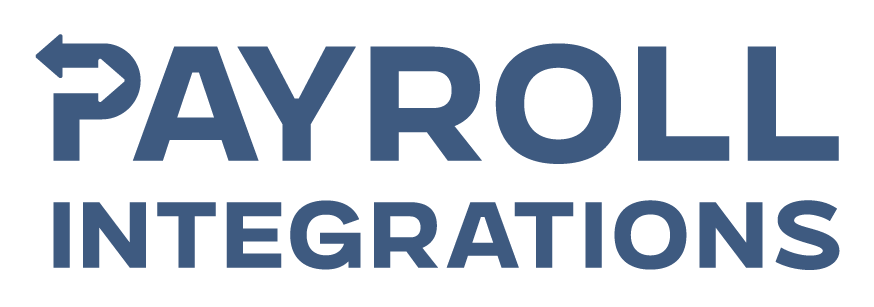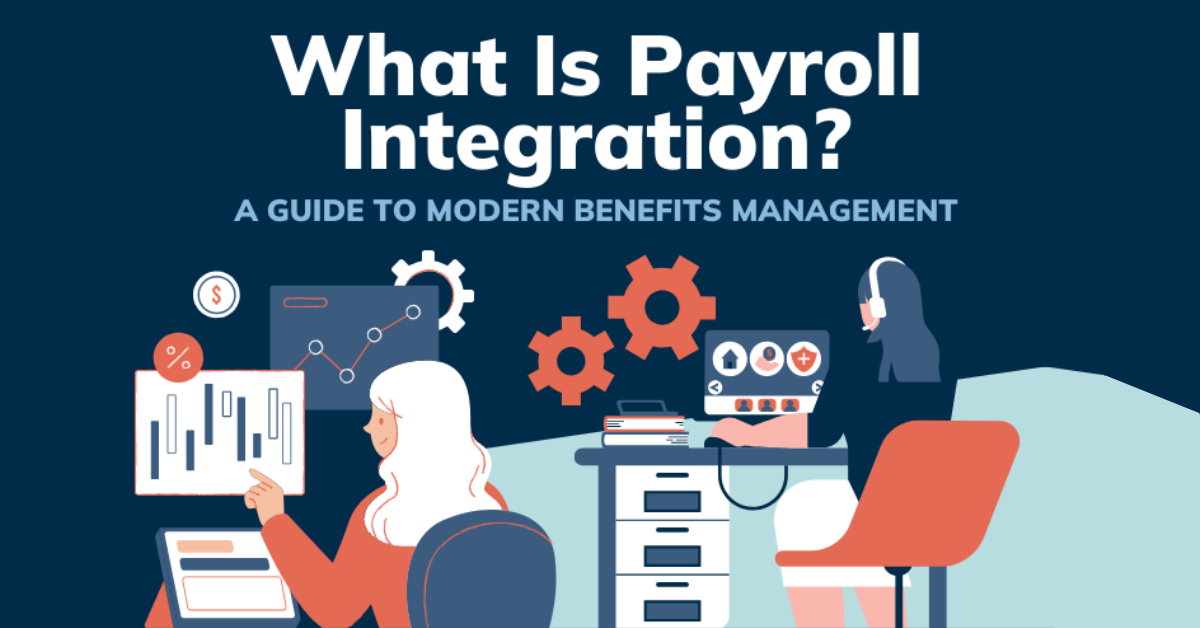In today’s business world, staying competitive means digitizing processes—and payroll is no exception. Payroll integration is the use of digital tools (like software) to automate data exchanges across systems that handle payroll, benefits and compliance.
What Is Payroll Integration?
The overarching goals of payroll integration software is much the same as any form of digitization: to automate basic or tedious manual processes, streamline more complex processes and generate efficiencies that ultimately translate into a more productive organization.
Payroll integration software aims to:
- Automate tedious tasks (like manual data entry).
- Streamline complex processes (like tax compliance and benefits management).
- Boost efficiency across your organization.
In short, it makes life easier for HR, accountants and leadership alike.
The Problem with Manual Payroll Processes
Many organizations still rely on manual payroll integration, which is:
- Time-consuming: Hours spent on data entry and corrections.
- Error-prone: Mistakes can lead to costly penalties or compliance issues.
- Expensive: More manual work means higher labor costs.
Modern payroll integration solves these problems by using APIs (Application Programming Interfaces) to automate data exchanges between systems.
Key Features of Modern Payroll Integration Solutions
-
Automated data exchanges: No manual input required.
-
Scalability: Works for businesses of all sizes.
-
Comprehensive support: Handles everything from benefits management to tax compliance.
-
Historical payroll processing: Integrates past data seamlessly.
What Does Payroll Integration Do?
Payroll integration can handle a wide range of data and processes, including:
- Time and attendance tracking
- Employee benefits management
- Tax compliance and reporting
- Retirement account management (e.g., 401(k)s)
- Payment processing
It also works with various software systems, such as HR platforms, accounting tools and tax filing solutions.
Types of Payroll Integrations
There are many types of payroll integrations, as are there many types of data that can be integrated; what processes see integration varies depending upon a given organization’s needs.
Traditionally, payroll integration would have occurred manually, a laborious and time-intensive process. Yet, the majority of organizations continue to manually integrate payroll data.
This increases costs both in the sense that more manual human intervention is required in the process and in that there are greater opportunities for user error, in turn resulting in data inaccuracies that cost organizations time and money.

Modern payroll integration leverages Application Programming Interfaces or ‘API,’ where ‘application’ refers to any software or software stack designed for a specific, targeted and often critical function.
What data is targeted within a payroll integration process can vary upon need, from the fundamentals such as time, attendance and expense tracking to tax compliance, retirement account management, benefits management and everything in between that HR teams and accountants would benefit from.
Benefits of Payroll Integration
From high-level executives to HR staff, payroll integration stands to tremendously benefit organizations at all levels. Here's how:
1. Save Time
Automating repetitive tasks frees up your team to focus on strategic work. For example:
- HR managers can shift from data entry to addressing employee needs.
- Executives gain peace of mind knowing payroll and compliance are handled accurately.
2. Save Money
- Reduce errors that lead to costly penalties or rework.
- Cut down on manual labor costs.
3. Improve Accuracy and Security
- Minimize human error in payroll and benefits administration.
- Reduce vulnerabilities that could lead to compliance issues or cyberattacks.
4. Support All Team Members
- From HR staff to executives, everyone benefits from smoother, more efficient processes.
It is also worth noting, when seeking to automate or otherwise streamline HR operations through digital means, the aim should not be to altogether replace human input where it is most necessary but to free up the time and energy of employees to do the things only they can truly do best.
By automating the tedium out of HR’s day-to-day, accuracy is improved and errors are reduced, saving time, improving organizational efficiency and even increasing security by reducing vulnerabilities that could result from (e.g.) improper benefits administration or poor tax code compliance, both fast ways for organizations to find themselves in court.
Who Needs Payroll Integration?
Every organization that hires employees and complies with tax laws. This includes:
-
Large enterprises: Require seamless payroll systems to manage complex operations.
-
Small-to-medium businesses (SMBs): Often benefit the most, as they can focus on growth instead of manual tasks.
.png?width=800&height=534&name=The%20Problem%20with%20Benefits%20Administration%20(3).png)
Payroll automation saves—or makes—organizations money. Again, this benefits everyone at an organization, from HR & payroll staff and management to finance leads, senior level management and everyone doing the critical day-to-day work that makes every organization run.
This results in an improved employee experience at a time when the global labor shortage continues, placing renewed emphasis on supporting the employees an organization does have.
It also benefits every size of organization, from the largest to small-and-medium sized businesses.
In fact, while the largest organizations practically require modern payroll integration to function smoothly today, small-to-medium-sized businesses (SMBs) are often those most inclined to want to try and get along without it.
Yet, SMBs are arguably most in a position to benefit from automating payroll integration so they can instead engage in the busy, tireless work of making their (e.g.) new business the greatest success it can be by focusing on what matters, such as customer service efforts.
While that’s why payroll integration stands to benefit any organization that hires employees and complies with tax law (in other words, virtually all organizations), how is another question. Thankfully, due to new technologies and processes, it is easier today than it ever has been.
How APIs and Payroll Integrations Work Together
Outdated methods like Electronic Data Interchange (EDI) and Secure File Transfer Protocol (SFTP) are inefficient and costly. Instead, modern solutions use universal APIs and integration-platform-as-a-service (iPaaS) to:
-
Save 50–100 hours per year in manual work.
-
Avoid setup fees and per-payroll costs.
-
Go live in 4–6 weeks with minimal testing or human intervention.

[Read More: What Is a Payroll API]
How to Choose a Payroll Integration Solution
So far, what payroll systems are and why they benefit almost any given organization has been laid out, but how to go about this may be puzzling for (e.g.) HR managers looking for a change.
As discussed, manual payroll integration is increasingly the way of the past: inefficient, costly, distracting, and error-prone at a time when cyberattacks on critical organizational infrastructure are only growing—and as any cybersecurity professional can tell, the more human input within a process, the greater opportunities for cybercriminals.
Rather, organizations today can integrate their payroll through APIs and cutting-edge solution providers that specialize in integration for businesses of any size.
However, not all solutions are created equal, and some older digital approaches to automated payroll integration such as Electronic Data Interchange (EDI) and Secure File Transfer Protocol (SFTP) are today inefficient and difficult to use.
Meanwhile, older implementations of API stacks that require individualized integrations are expensive and time-consuming, something organizations are specifically seeking to avoid by integrating their payroll.
It is with new, automated, universal APIs that research has found employers can save between 50 to 100 hours per year. How? By providing a one-size-fits-all approach that automatically accommodates a much wider range of organizations, needs, and functions.
This can be done in concert with a solutions integration, or an API integration-platform-as-a-service (iPaaS) to help organizations overcome any hurdles they might experience during the onboarding process (including training and integration with existing, legacy processes and solutions).
With a modern API payroll integration solution in hand, organizations can target their needs with the assurance that every dime is tracked and every commitment made from employee benefits to tax-advantaged accounts, retirement and 401k planning, compliance, and reporting.
Furthermore, in contrast to (e.g.) STFP payroll integrations, universal APIs avoid thousands in setup costs, avoid per-payroll fees, can go live within 4-6 weeks, don’t require testing or significant human intervention, and can even process historical payrolls.
Here’s what to look for when selecting the right solution for your organization:
1. Compatibility
-
Does the platform integrate with your existing systems (e.g., HR software, accounting tools)?
-
Can it handle the specific data and processes you need, such as benefits management or tax compliance?
2. Ease of Use
-
Is the platform user-friendly for both technical and non-technical team members?
-
Does it offer clear onboarding and training support?
3. Scalability
-
Can the platform grow with your business?
-
Does it support organizations of your size and complexity?
4. Automation Capabilities
-
Does it minimize manual input through APIs or other automation tools?
-
Can it handle real-time data exchanges to reduce delays?
5. Cost Transparency
-
Are there hidden fees, per-payroll charges, or expensive setup costs?
-
Does the pricing model align with your budget?
6. Security and Compliance
-
Does the platform meet industry standards for data security?
-
Can it help you stay compliant with tax laws and regulations?
7. Customer Support
-
Does the provider offer reliable customer support and troubleshooting?
-
Are there resources like FAQs, tutorials, or dedicated account managers?
8. Implementation Time
-
How long will it take to get the system up and running?
-
Does the platform offer quick onboarding (e.g., 4–6 weeks)?
Implement Payroll Integration Systems for Better Results
In sum, modern, digital payroll integrations allow organizations to take time-consuming, tedious, and error-prone (read: expensive) processes to be automated via software and API. This benefits everyone at an organization from top to bottom by simply making key operations smarter, faster, and more accurate.
Yet, there are better and worse ways to go about modernizing payroll integrations. Newer, more flexible APIs and integrations-as-a-service pave the way for any organization to ensure that their fundamentals are covered today and tomorrow.
To discover how Payroll Integrations' API platform can transform your benefits management process, visit: https://www.payrollintegrations.com/401k-capabilities-sheet


